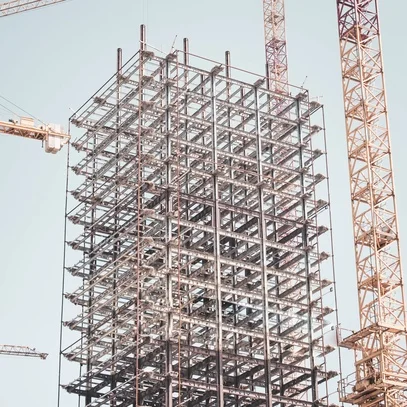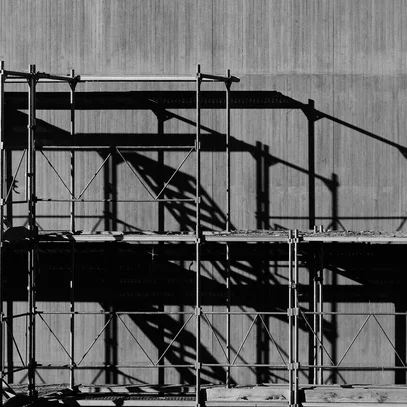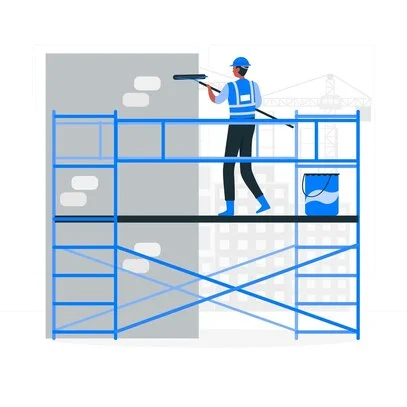Scaffolding holds immense importance in construction and maintenance endeavours throughout the United Kingdom. Different types of scaffolding are utilized, each serving specific purposes and adapting to different environments.
This article delves into the diverse categories of scaffolding and their applications in the UK, shedding light on the indispensable nature of this essential construction tool.
If you need to hire commercial scaffolding service in London, visit our Scaffolding Services page and find a reliable contractor for your project.
1. Single Scaffolding
Also referred to as bricklayer's scaffolding or putlog scaffolding. A solitary row of vertical standards that are supported by horizontal timber ledgers. During construction, putlogs, horizontal timber components, are fixed into the wall's cavities.
Applications: Finds common use in brickwork and masonry repairs in the UK, as well as during the construction or renovation of walls, chimneys, and other vertical structures.
2. Double Scaffolding
Also known as mason's or independent scaffold structures. These structures offer enhanced stability and versatility compared to single scaffolding. It consists of two rows of vertical standards. As in the previous type, the standards are connected by horizontal ledgers.
Applications: Is frequently employed in heavy-duty construction projects such as stone masonry, where a more stable structure is required.
3. Cantilever Scaffolding
Also recognized as needle scaffolding. These scaffolds extend horizontally from a building or structure. It utilizes needles or cantilevers that rest on the floors or beams of the edifice.
Applications: Is often utilized when it is not feasible to erect scaffolding from the ground up, such as when working on tall buildings or navigating obstacles. It is commonly employed in bridge construction and repairs.
4. Suspended Scaffolding
These structures are suspended from the top of a structure instead of being supported from the ground. It typically comprises platforms suspended by ropes, chains, or cables.
Applications: Is commonly employed for activities such as window cleaning, painting, and maintenance of high-rise buildings in the UK.
5. Trestle Scaffolding
Also referred to as scaffold ladders or painter's scaffolding. This is a portable and lightweight scaffolding system. It features movable tripods or ladders with adjustable legs and horizontal platforms.
Applications: Is frequently utilized in smaller construction and maintenance projects in the UK. It proves ideal for tasks like painting, plastering, and ceiling repairs, where mobility and quick setup are essential.
6. Steel Scaffolding
Constitutes a durable and robust scaffolding system crafted from steel tubes or pipes. It offers strength, stability, and versatility, making it suitable for various construction applications.
Applications: Used in heavy construction projects, encompassing high-rise buildings and large-scale infrastructure endeavours. Its strength capacity makes it well-suited for supporting heavy loads and accommodating multiple workers.
Conclusion
Scaffolding plays a pivotal role in the UK's construction industry by providing secure and efficient access to elevated areas for workers. Remember, choosing the appropriate scaffolding ensures a safe working environment and contributes to the successful completion of construction projects.


